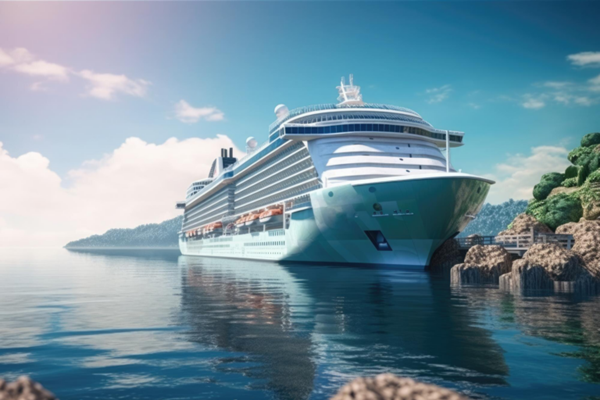After the captain issued serious and strict instructions on what should have been a leisurely and relaxing vacation, passengers aboard the cruise ship suddenly found themselves in a tense and unusual situation that was far from their expectations. One of the true and often overlooked risks of traveling around the world on a large, luxurious, and opulent cruise liner was revealed to the passengers aboard Cunard’s Queen Anne. This ship recently navigated the Sulu-Celebes Sea, a stretch of water that lies between Darwin, Australia, and Manila, Philippines. This route was part of an extensive and ambitious 111-night voyage that began months earlier in Germany, in January.
While many might imagine the voyage to be smooth sailing with nothing more threatening than occasional rough seas or bad weather, the reality was different. The captain issued a loudspeaker announcement to passengers, informing them that the ship would be operating under a “heightened level of security alertness” during a specific part of the journey. The reason for this elevated security was that the ship was passing through a region known for its piracy threats — an area where modern-day pirates have been known to attack vessels.
To reduce the ship’s visibility and lower the chances of attracting unwanted attention, passengers were instructed that the external promenade decks would be closed and shuttered overnight. Additionally, only the necessary open-deck lights required for safety and navigation would remain illuminated. This measure was taken to ensure the ship stayed as inconspicuous as possible while still maintaining essential safety protocols.
Furthermore, guests were specifically asked to keep the curtains of their staterooms drawn at all times during the night and to turn off all the lights inside their rooms when not in use. This was a precaution designed to minimize any light that could make the ship easier to spot by potential pirates or other hostile entities.
Several comments showed amazement that piracy is still a real danger in certain parts of the world. One user wrote, “I don’t know why, but every time I hear about real pirates, I’m always shocked that they really exist in this day and age.”
A person with firsthand experience on cruise ships added valuable insight: “I used to work on a cruise ship, and there are definitely a few areas where piracy is a real concern. We would have a special security team onboard, armed, when we passed through dangerous regions like near Somalia. You feel safe knowing there are trained professionals handling it.”
Others reassured that if a cruise or passenger ship were ever attacked by pirates, the response from naval forces would be swift, strong, and effective — even more so than for standard merchant vessels. This helps to explain why attacks on cruise ships remain very rare.
Indeed, while ships regularly take precautionary measures when sailing through piracy-prone waters, genuine attacks on cruise liners are uncommon. Pirates usually target larger commercial vessels such as container ships and oil tankers, which carry more valuable cargo and are seen as more profitable targets.
In response to inquiries, a spokesperson for Cunard told Business Insider, “As part of standard maritime procedures, our Captains may make precautionary announcements when sailing through certain regions known for security risks.” The spokesperson also reassured the public by emphasizing, “There was no specific threat to the ship or its guests at any time, and the onboard experience remained uninterrupted and safe throughout the voyage.”
This incident serves as a reminder that despite the luxury and comfort of modern cruise travel, ships must still navigate real-world dangers, including piracy, and take all necessary precautions to protect passengers and crew. It highlights the ongoing importance of maritime security and the vigilance required when traveling through certain parts of the world’s oceans.




